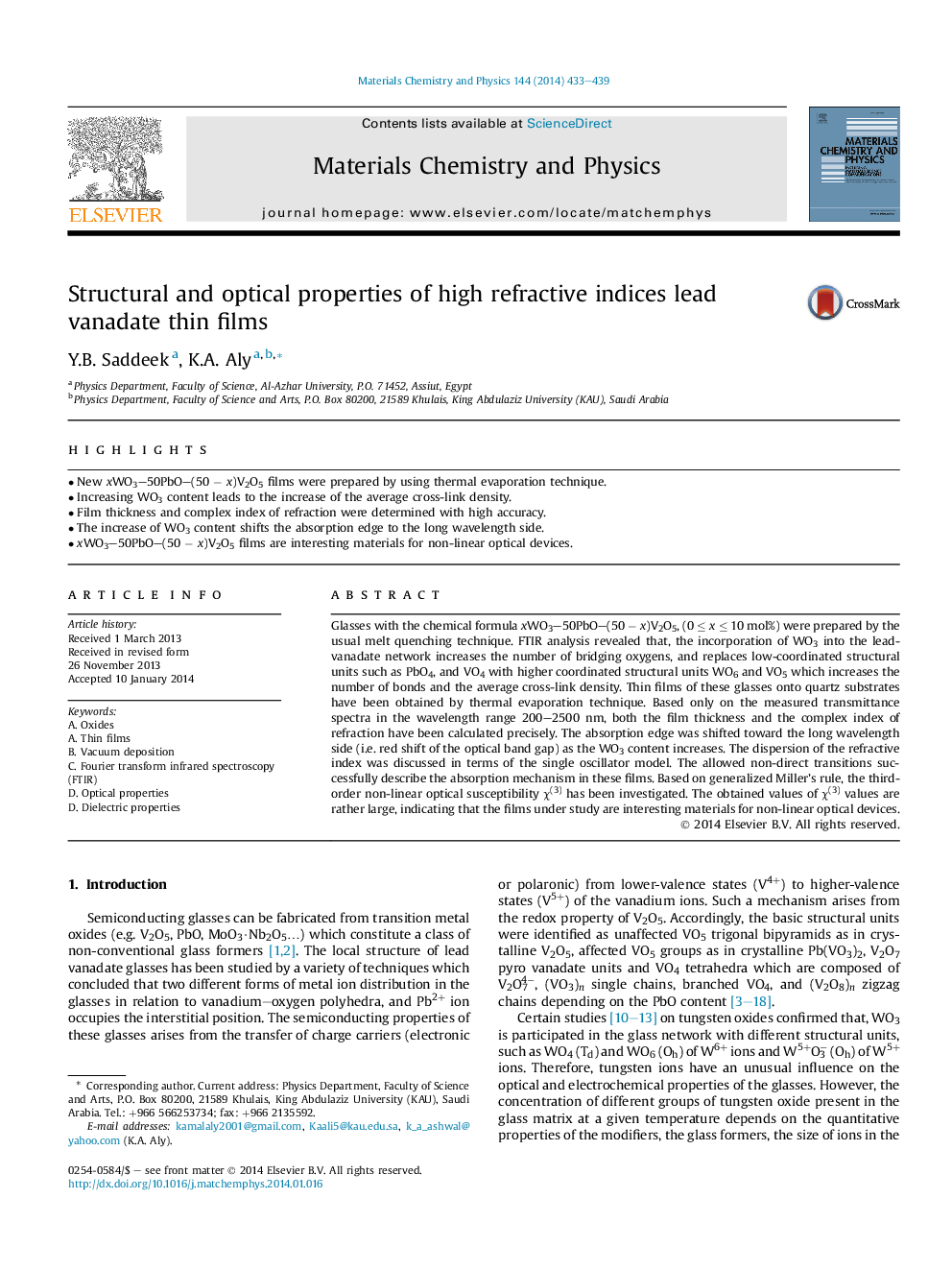| Article ID | Journal | Published Year | Pages | File Type |
|---|---|---|---|---|
| 1522318 | Materials Chemistry and Physics | 2014 | 7 Pages |
•New xWO3–50PbO–(50 − x)V2O5 films were prepared by using thermal evaporation technique.•Increasing WO3 content leads to the increase of the average cross-link density.•Film thickness and complex index of refraction were determined with high accuracy.•The increase of WO3 content shifts the absorption edge to the long wavelength side.•xWO3–50PbO–(50 − x)V2O5 films are interesting materials for non-linear optical devices.
Glasses with the chemical formula xWO3–50PbO–(50 − x)V2O5, (0 ≤ x ≤ 10 mol%) were prepared by the usual melt quenching technique. FTIR analysis revealed that, the incorporation of WO3 into the lead-vanadate network increases the number of bridging oxygens, and replaces low-coordinated structural units such as PbO4, and VO4 with higher coordinated structural units WO6 and VO5 which increases the number of bonds and the average cross-link density. Thin films of these glasses onto quartz substrates have been obtained by thermal evaporation technique. Based only on the measured transmittance spectra in the wavelength range 200–2500 nm, both the film thickness and the complex index of refraction have been calculated precisely. The absorption edge was shifted toward the long wavelength side (i.e. red shift of the optical band gap) as the WO3 content increases. The dispersion of the refractive index was discussed in terms of the single oscillator model. The allowed non-direct transitions successfully describe the absorption mechanism in these films. Based on generalized Miller's rule, the third-order non-linear optical susceptibility χ(3) has been investigated. The obtained values of χ(3) values are rather large, indicating that the films under study are interesting materials for non-linear optical devices.
